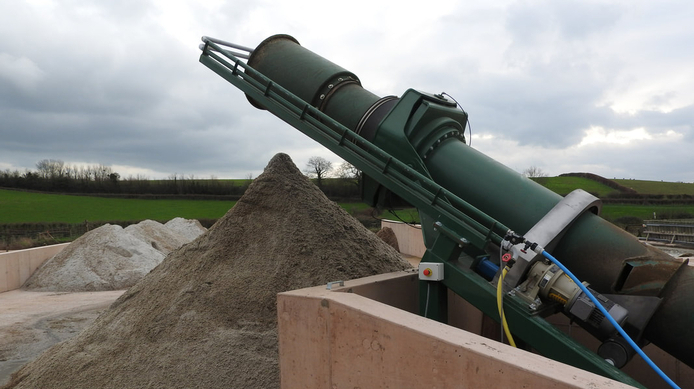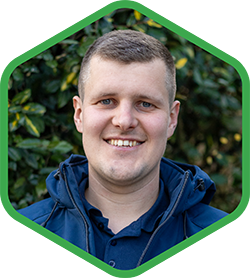Sand: for a future-proof business
Anthony Gothard chose more than twenty years ago to switch to sandbedding. A few months after implemeting the sandbedding in the stables he saw the great benefits. His cows clearly felt more comfortable in the new sandbedding and therefor spent more time lying down. The grip on the concrete improved, which meant that the cows had fewer injuries due to slipping. "An excellent improvement for the health of my cows, which are the most important for every farmer" - says Anthony.
Due to the hygiene of the sand the cows stay cleaner, are healthier and the health of the udders improved. All this results in an improvement of the milk hygiene.
Benefits according to Anthony:
- our cows lie more often and longer in the cubicles, due to the comfort of the sand
- our cows have fewer injuries and better grip on the - previously - slippery concrete floor
- better resistance of the cow and healthy udders
- 95% sand recovery and associated yield
- the new design makes use of the existing pits and business operation
- reuse of existing fibers and separators
- Weekly saving 2300,- euro
There were downsides too, with wear and tear on concrete and any equipment used to scrape, store, separate and spread slurry being detrimentally affected over time. But these were a price worth paying, given the main herd welfare benefits. Twenty years on and Anthony has expanded and improved his herd, with 830 all-year-round calving Holstein Friesians now averaging 11.900 liters/cow/year on a three times daily milking regime.
With herd size and performance close to his optimum, it was time to start challenging where the next areas of improvement would come from, and the focus fell on the use of sand.
“Sand bedding is our best option from a cow welfare and performance perspective, but it's a big cost on unit using around 90 tonnes a week and there are on-going issues with the wear on equipment and disposal,” says Anthony. “Over the years we've targeted the spread of slurry with a big sand component onto the heavier parts of the farm, to improve soils, but the areas where we need to do this are running out. We've improved our efficiency and sustainability in other areas with the installation of solar panels on roofs and heat recovery facilities, so finding a system that could separate sand economically was an important next step.”
Collaboration with Mavasol
The first meeting between Klaas de Vries, salesdirector of Mavasol and Anthony was in the United States at a farm with a actif sandseparationsystem. "We think it's important to show farmers the result of a working machine. Our current customers are also often excited to work with them later and are happy to show their farm to others potential buyers" - says Klaas.
Gothard also chose the One Shot Sand Separation System. This machine is part of a complete system, tailored to the farm's existing facilities and infrastructure. At the moment the sand separationsystem has a capicity of 95% clean sand recovery and maximum reuse of water. "In some cases, this system can be combined with a zero need for fresh water. In addition, an option is often chosen for the portion of the remaining fiber components."
How does the new system work?
The One Shot installation at Gothard's is a complete design. It starts with scraping the slurry from the stables, as was done before. The current scraping system in the stables is used for this. This asset is collected in the first pit and mixed with recycled water. The mixture is then processed by the One Shot-augur.
Clean sand is poured from the end of the tube, which is later reused in the stables. The manuremixture is not completly free of sand and goes to a second separation lane, with a 25 cm auger that returns the sand to the auger shot pit. The remaining sand is filtered in the sand lanes. After the sand settels in the sand lanes the mixture is pumped up to the existing separator, resulting in a sand-free fiber mixture. The remaining water flows into a lagoon and is reused in the sand separationcycle.
"The optimal functioning of the system depends on several variables: the amound of water, the speed of the system, the timing of the different stages" - explains Anthony. "The installation has been running for several months now and we are over 80% sandrecovery. We are about to finetune the variables and with Mavasol's knowlege I expect that we will get the result of 95% sandrecovery."
"We always look at the current business operations, machines and pits. There are often existing pits and equipment we can be reused in the design. When they are functional it's not necessary to purchase new or build the design from scratch. This is how we create the sytem tailor-made for the farm and avoid unnecessary costs" - adds Klaas
Update 2021: The system had been fully optimized and the One Shot ensures a steady sand recovery of 95%. This ensures a significant reduction of the supply of new sand. "In most cases sand is transported to the farm. When a farmer reuses the sand, the transport is no longer, or less needed. The creates a considerable cost saving and CO2 savings, because the transport trucks a no longer drive back and forth."
Savings
"We save a lot of costs with the sand separationsystem and it also makes a big difference in therms of CO2 reduction. Beceause we supply much less sand, this immediately reduces the transport and the emissions emitted by the trucks.
At the moment (article: february 2019) sand costs approximately betwee 16 and 20 British pounds / ton. Gothard saves weekly 1500 till 2000 pond (maximum saving of €2315 per week). This savings and the additional benefits that come from the improved fertilizer value of the fiber will allow Anthony a return on investment within five years.
Anthony: "It's not just the sand savings that make the system a success. Due to the high level of sand recovery this sand no longer ends up in the machines and equipment. We have a drier and more managemeble fertilizer product that we can store effectively and spread more eventualy. As a result, we have less need for phosphate and potassium, which we have to purchase. With this acquisistion, we have futureproofed our business. We use the best beddingmaterial available fo the well-being of our cows. And by recycling the stock and reducing the freshwater requirement, we are less dependent on suppliers."
"Of course it is important for our business to be viable but it also sends a good message to consumers that farmers are investing in sustainability for the wider benefits it brings" - he added.
Artikel “British Dairying”: Februari 2019






